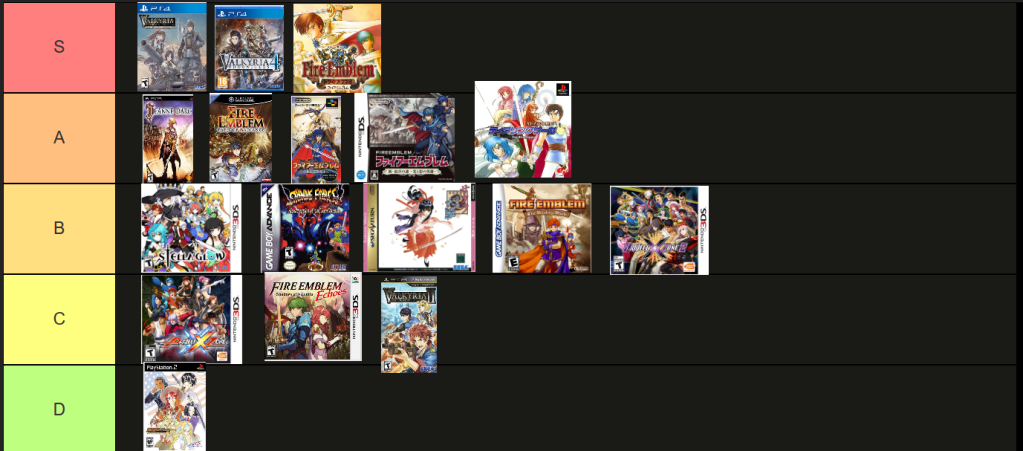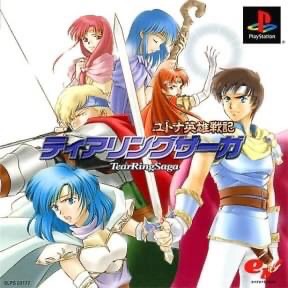Platform: PlayStation
Developer: Tirnanog
Publisher: Enterbrain
Year: 2001
Introduction
Shōzō Kaga, former game director and designer of Fire Emblem during its early days , parted ways with Intelling Systems and Nintendo on 1999 and continued his journey on his own. He built his own independent studio, called Tirnanog, and Tear Ring Saga Yutona Eiyu Senki was born on PlayStation.
Story
First things first, this is arguably peak storytelling for a Kaga game. The depth, complexity and lore go way beyond what we have on games like Holy War. It’s not an exageration to claim we better write down like a character/kingdom log when we play, as it’s easy to get lost. I’m not spoiling anything but be prepared for top tier good character writing, likable cast, complex villains, plot twists.
There are some good FE tropes here and there, so it’s also easy to please Archanea/Valentia fans, this is a game for you as well.
Gameplay
I describe like a sick mix between Thracia, Valentia and the Sacred Stones. Meaning: we control the management of two allied armies, they have their own arc yet they help and find each other now and then. But, only on this game we can switch soldiers/weapons/items/gold between armies, at specific points in the story. This feature provides a lot of fresh team customizations and a variety of play styles.
Many features are very FE-derivative while others go to a wild, unheard of territory. The way some mechanics like grinding and shields work is just an example but maybe, some of the best ideas are monster summoning, dragon transformation and the peculiar implementation of item/weapon stealing.
And it’s a game designed with unit skills, free unit customization with these skills. This will not only please a hardcore thracia fan but Tellius fans too.
Difficulty design is better than FE4 and older, and some specific maps go to the tough boundaries of T776. Real strategy and efficient army/weapon/item management are key in order to beat many tough challenges.
Art/UI
Game art is very Kaga-ish and arguably better than what was shown on Holy War or Thracia 776. Many UI aspects didn’t age well though, but this shouldn’t be a problem for you, Jugdral fan, right?
However, one of the greatest, maybe the best UI idea is to have this world map to move between battles, just like Gaiden or Sacred Stones.
Music
Overall, the OST was banger for me. I liked most tracks. They don’t have the FE vibe, they are something else yet they match what is shown on screen.
Conclussion
A must play if you are a Jugdral or Kaga fan.
An underrated SRPG gem from the past that will please players looking for an engaging story and a serious challenge.
Score: 9.0


